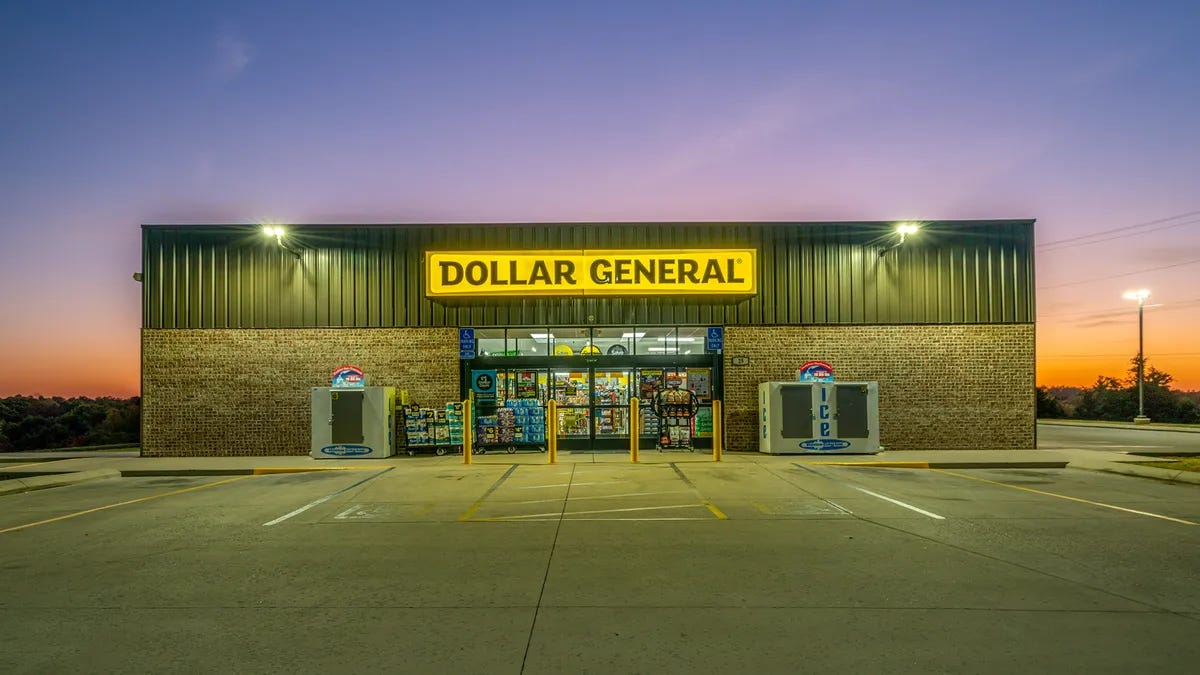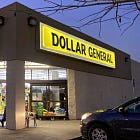Idea List: Issue #13
This week I analyze Dollar General and Surge Components
In this post I want to share two stock ideas that appear to be undervalued. These companies came from the “top of the funnel” of my research process, meaning they came from stock screeners, or recommendations from Twitter and Substack. What I want to do here is present some qualitative and quantitative metrics that determine if I should keep researching the stock or take a pass on it. Further, I want to do a basic valuation to verify that the company is actually undervalued. The end goal is to have some semi-vetted stock ideas that I can add to a watchlist and start doing more thorough research on.
Dollar General
Dollar General DG 0.00%↑ is a retailer that has declined nearly 70% since its peak in 2022, starting around $250 and now trading at $80 a share. The company’s market cap is slightly less than $18B. DG has around 20,000 stores with a focus on rural areas. Their typical customer has income less than $35k, usually buys less than 5 items for an average checkout cost of $15. The stock has sold off due to slower growth and weak low income consumer demand impacting margins. Dollar Generals revenue has been consistently grown at a nice rate for 20 years as the company has grown its store footprint. Over the last 12 months revenue is up 2.6%, lower than in the past.
Dollar General’s gross margins have hovered around 31% the last 10 years. Operating margins were 9-10% 7+ years ago, slid down to 8% before 2020, bounced back to 10.5% in 2020, then fell back to 8.8% in FY23, dropped to 6.3% in FY24. Over the last twelve months operating margins recorded a lame 5.3%. Part of the bull case for DG is that the soft consumer demand is temporary and that margins can revert closer to historical levels.
As for valuation, DG’s management guidance is 5% sales growth from last year, which gets us $40.6B in sales this year. Morningstar’s analysis on DG suggested a 7% operating in the medium term, so I’ll use that figure. That gets $2.84B in operating income. Next, DG usually pays a 22% tax rate so that gets an after tax income of $2.22B. Since Dollar General is a reasonable quality mid-cap stock, I think a 7% discount rate is reasonable. This gets an enterprise value of $31.7B. Adding DG’s $1.2B in cash and subtracting $7B in long term debts gets an equity value of $25.9B. My estimated equity value comes out to be $118 a share, meaning the shares currently appear to be decently undervalued.
Based on these figures I’m pretty interested in Dollar General because it seems like its facing temporary headwinds. However the valuation is pretty sensitive to the margin figure. An investor has to be patient for the margins to improve, and hope 5% margins are not the new normal. That being said, I’ll start doing more due diligence and may buy some shares.
Surge Components
Surge Components $SPRS is a tiny company, with a market is at $13.4M. The stock price was $3.60 in early 2022 then trended down to $2.36. Surge is a distributor of electrical components to other distributors, and to small and medium sized manufacturers. The main component they sell are capacitors, followed by some basic semiconductor devices like diodes and rectifiers. SPRS has another segment that sells simple audio components like buzzers. The company drew my interest because it is selling below net current asset value
Surge’s latest current asset figure is $23.7M, which about $12M is in cash and bonds, and $5.7M in inventory. Total liabilities are $5.9M, then for net-nets I add back lease liability which is $0.9M. This gets a NCAV of $18.7M, or $3.25 a share. This suggests the company is modestly undervalued. Other red flags I look for with net-nets is whether they constantly lose money or issue a lot of shares. Surge’s profits bounce around, but have only had one negative year in the last ten. Surge also has not issue much stock.
I was reading a SeekingAlpha article on the company (the latest analysis was from 2016) that complained about the managements poor attitude towards shareholders. The article listed the managements high pay relative to cash flow, issuing stock options when the company is below NCAV, lack of shareholder returns even though they have a pile of cash and bonds. These points are valid but probably come with the territory with these types of companies. I think it would be nice could return some of its cash to shareholders, a catalyst that might get the stock price over its NCAV. Still, I’m always on the search for net-nets and I might nibble on some shares if I can grab some below $2.28.
Stocks Mentioned: DG 0.00%↑ $SPRS





